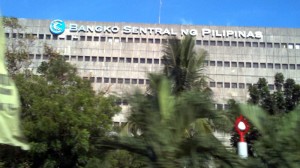BSP seeks help, says it can’t temper inflation on its own
The government must sort out the issues that have led to a tightening in the country’s supply of goods, if it hopes to keep inflation from climbing further in the coming months, the Bangko Sentral ng Pilipinas (BSP) said.
While controlling inflation has always been the main task of monetary authorities, interest rate hikes and the like cannot and must not be the state’s only line of defense against rising prices.
“We will continue to coordinate with other agencies of government to address pressures from the supply side,” BSP Governor Amando M. Tetangco Jr. said last week.
Speaking at a forum organized by Bloomberg for foreign exchange traders, Tetangco said the central bank could not fight inflation on its own.
The BSP’s main responsibility is to protect the public’s purchasing power by keeping prices stable. It does so by controlling the amount of cash circulating in the economy which, in turn, influences consumer demand. The central bank measures, considered to be forms of “demand management,” merely counteract instead of address inflationary pressures that spring from the supply side.
In keeping inflation in check, the BSP said administration officials should ensure the timely importation of certain food products and tighten price monitoring activities to prevent speculative trading.
Lowering logistics and shipping costs, and pushing projects that improve the agriculture sector’s productivity, should also ease the tightness in the country’s food supply.
Last July, inflation rose to its highest level for the year at 4.9 percent, faster than June’s 4.4 percent. It was brought on by the rise in prices of rice and other food products, which weighed heavily on the official consumer price basket used to compute inflation.
This year, inflation is forecast to average at 4.33 percent, faster than last year’s 3 percent, and above the midpoint of the central bank’s 3-5 percent target range.
In an attempt to “anchor” inflation expectations, the BSP last July raised policy rates for the first time since 2011. Prior to the hike, the BSP’s benchmark overnight borrowing and lending rates stood at record lows of 3.5 and 5.5 percent, respectively.
Last month’s hike was also preceded by adjustments in other tools used to curb excess liquidity growth. In April and May, banks were told to hike reserves set aside from clients’ deposits and, in June, yields for special deposit accounts were increased to encourage banks to park more of their idle cash with the BSP.

